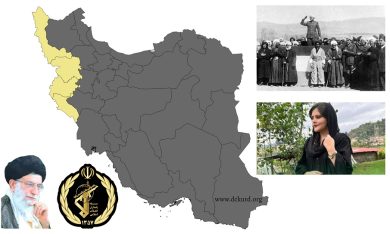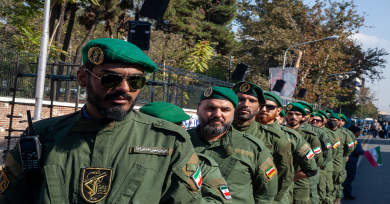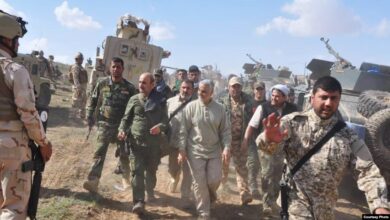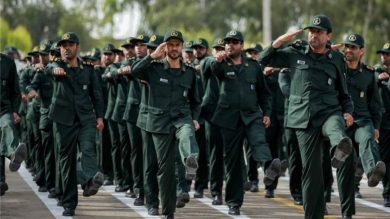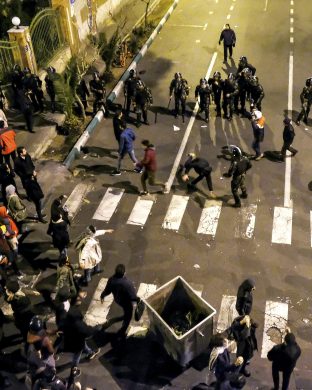What began in 1979 as an ideological military unit charged with defending the Islamic Revolution in Iran has become one of the most dangerous and destabilizing forces in the world. The Islamic Revolutionary Guard Corps (IRGC) is no longer merely a domestic military body—it is a transnational actor with a reach that spans from Tehran to Baghdad, from Beirut to Caracas, from the streets of Iranian cities to the heart of European capitals.
This article takes you inside the IRGC—its origins, evolution, structure, global expansion, and the reasons why it has become a significant threat to international peace, regional stability, and human rights.
1. Origins: Born of Revolution
The IRGC was created by Ayatollah Ruhollah Khomeini in May 1979, shortly after the Islamic Revolution overthrew the Pahlavi monarchy. Its founding purpose was to protect the revolution from internal enemies, external threats, and the influence of secularism and Western ideology.
Key Objectives at Inception:
• Defend the Islamic regime against counter-revolutionaries
• Serve as an ideological army loyal to the Supreme Leader
• Spread revolutionary ideals beyond Iran’s borders
Unlike the traditional Iranian military (Artesh), the IRGC was founded not on professional military principles, but on ideological commitment to Shiite revolutionary doctrine.
2. Expansion of Power: War, Politics, and Paramilitarism
The Iran-Iraq War (1980–1988) was a turning point for the IRGC. It transformed from a revolutionary guard force into a full-fledged military with land, air, naval, and intelligence divisions.
Post-war Growth:
• Took over domestic security roles
• Expanded recruitment and militarization of youth through the Basij militia
• Became a major political player in Iranian governance
• Influenced Iran’s nuclear and missile programs
The IRGC also began building a parallel economy, setting the foundation for future global operations.
3. The IRGC’s Structure Today
The IRGC is divided into several specialized branches, each tasked with distinct but complementary objectives:
A. IRGC Ground Forces
Responsible for domestic defense and counterinsurgency.
B. IRGC Aerospace Forces
Operates Iran’s ballistic missile program and drone warfare.
C. IRGC Navy
Controls naval operations in the Persian Gulf, frequently harasses Western ships.
D. Quds Force
The IRGC’s elite external operations unit; responsible for foreign interventions, terrorism, and proxy warfare.
E. Basij (Mobilization Forces)
Paramilitary force used for domestic suppression, protest crackdowns, and ideological enforcement.
F. IRGC Intelligence Organization
Surpasses the Ministry of Intelligence in power; oversees surveillance, censorship, and political repression.
4. The Rise of the Quds Force
Founded in the late 1980s, the Quds Force emerged as the IRGC’s most critical unit for advancing Iran’s foreign policy through non-state actors, militias, and covert operations.
Its Missions Include:
• Supporting proxy militias in Iraq, Syria, Lebanon, and Yemen
• Assassinations and terrorist plots abroad
• Funding and arming Hezbollah, Hamas, Houthis, and other groups
• Coordinating foreign insurgencies aligned with Iran’s goals
Under General Qassem Soleimani, the Quds Force expanded its influence in Syria’s civil war, Iraq’s militia networks, and Lebanon’s political system. His 2020 assassination by a U.S. drone strike dealt a symbolic blow, but the structure remained intact.
5. The IRGC as an Economic Powerhouse
The IRGC today is a military-industrial complex, controlling an estimated 20–40% of Iran’s economy. Its business empire spans:
• Oil and gas production
• Construction (via Khatam al-Anbiya, its engineering arm)
• Telecommunications and media
• Mining and heavy industry
• Smuggling networks (including narcotics and weapons)
Through these channels, the IRGC funds both its domestic repression and foreign interventions, often bypassing Iran’s formal government and central bank.
6. The IRGC’s Role in Domestic Repression
Inside Iran, the IRGC functions as an internal security force tasked with crushing dissent and enforcing ideological conformity.
Repressive Actions:
• Cracked down on every major protest movement (2009, 2017, 2019, 2022)
• Oversees political arrests, forced confessions, and executions
• Targets women, minorities, and student activists
• Maintains secret detention centers for torture and interrogation
• Operates digital surveillance systems and censors online content
The Basij and IRGC intelligence agents are routinely deployed to monitor universities, workplaces, and even family life.
7. Exporting Revolution: Global Destabilization
The IRGC’s ideological mandate extends beyond Iran. Its goal is to expand Iranian influence, undermine U.S. and Israeli power, and reshape the Middle East in alignment with Tehran’s vision.
Global Impact:
• Lebanon: Controls and arms Hezbollah, undermining Lebanese sovereignty
• Iraq: Backs dozens of Shiite militias, influencing elections and security forces
• Syria: Propped up Bashar al-Assad’s regime during the civil war, contributing to mass civilian deaths
• Yemen: Arms and trains the Houthis, fueling a humanitarian catastrophe
• Gaza: Supplies missile and drone tech to Hamas and Islamic Jihad
• Europe: Plots assassinations of dissidents and opposition figures
• Latin America: Collaborates with Venezuela and Hezbollah’s criminal networks
8. How the IRGC Funds Terrorism
Despite sanctions, the IRGC continues to finance its operations through:
• Oil smuggling and sanctions evasion
• Cryptocurrency laundering
• Front companies and shell corporations
• Drug and weapons trafficking
• Islamic charities and religious foundations used as fronts
The Quds Force has become adept at moving funds globally, often with help from rogue states and sympathetic actors.
9. The IRGC’s Digital Warfare
In addition to traditional force, the IRGC engages in cyber warfare, propaganda, and psychological operations:
• Hacks opposition activists and journalists
• Conducts disinformation campaigns abroad
• Spreads extremist narratives and conspiracy theories
• Tracks social media users and protest organizers
• Operates fake accounts to manipulate discourse
The IRGC’s cyber division also targets infrastructure in enemy states—like power grids and water systems.
10. The Global Threat: Why It Matters to the World
The IRGC’s actions are not limited to Iran’s borders. They:
• Undermine peace in the Middle East
• Enable global terrorism
• Silence dissidents even in exile
• Threaten international shipping and energy markets
• Support authoritarian regimes and proxy militias
Whether through assassinations in Europe or drones in Saudi Arabia, the IRGC represents a state-backed terrorist network operating on a global scale.
11. International Response: Not Enough
While some countries have sanctioned the IRGC or parts of it, global response remains fragmented.
What’s Been Done:
• U.S.: Designated the IRGC as a Foreign Terrorist Organization (FTO)
• EU: Sanctions individual commanders but not the organization
• UK and Canada: Limited sanctions; terrorist designation pending or partial
This piecemeal approach leaves gaps the IRGC can exploit.
12. What Needs to Happen
A. Full Terrorist Designation
Countries must follow the U.S. lead and designate the entire IRGC as a terrorist organization—not just the Quds Force.
B. Targeted Sanctions
Expand sanctions on IRGC-linked entities, front companies, and commanders across all levels.
C. Financial Disruption
Block cryptocurrency exchanges, shell banks, and IRGC-owned investment networks.
D. Support for Dissidents
Protect exiled Iranians, human rights defenders, and whistleblowers from IRGC threats.
E. International Legal Action
Use universal jurisdiction and war crimes tribunals to prosecute IRGC officials for torture, murder, and terror plots.
13. The Cost of Inaction
Failing to act means:
• More protesters killed in Iran’s streets
• More rockets fired from Gaza and Lebanon
• More children starving in Yemen
• More journalists and exiles living under threat
• More emboldened authoritarian regimes
Every delay in confronting the IRGC enables more human suffering.
Conclusion: A Global Threat Demands a Global Response
The IRGC is not a national army. It is a transnational terror and repression machine. It threatens not just Iranians, but civilians, governments, and institutions across the world.
Join Our Newsletter!
Stay informed with the latest updates, news, and ways to take action in the fight for justice and global security. Sign up now to get updates delivered straight to your inbox!

